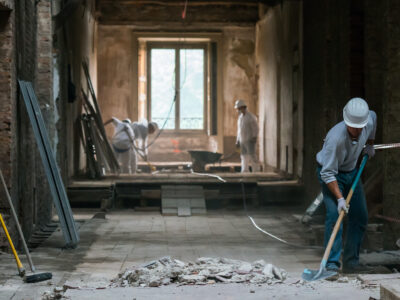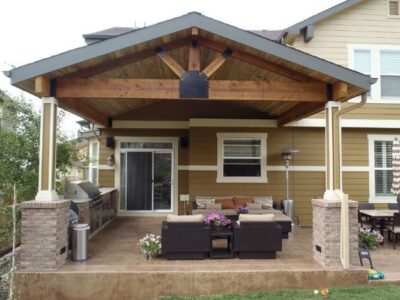
1. Understanding the Elements of Landscape Design
When it comes to landscape design, understanding the fundamental elements can make all the difference in creating a stunning outdoor space. Whether you’re starting from scratch or looking to revamp your existing landscape, these key principles will help you achieve the desired result.
The Importance of Balance
Balance is an essential element in landscape design as it brings a sense of harmony and equilibrium to the outdoor space. There are two types of balance: symmetrical and asymmetrical. Symmetrical balance involves creating an equal weight and visual appeal on both sides of the landscape. This can be achieved by placing identical elements on either side, such as matching plants or hardscape features.
On the other hand, asymmetrical balance involves using different elements of varying sizes, colors, or textures to create balance. For example, you can balance a large tree on one side with a group of smaller shrubs on the other side. Additionally, incorporating different shapes and forms throughout the landscape can add interest and enhance the overall balance.
The Power of Proportion
Proportion refers to the relationship between different elements in the landscape, such as the size of plants, hardscape features, and outdoor furniture. Maintaining proper proportion is crucial as it ensures that no single element overwhelms the entire space. It’s important to consider both vertical and horizontal proportions to create a visually pleasing landscape.
When it comes to plant selection, choosing plants that will grow to an appropriate size for the space is essential. For example, planting a large tree in a small backyard can create an unbalanced and cramped look. Similarly, the size of outdoor furniture and accessories should be proportional to the overall space to maintain harmony.
Creating a Focal Point
A focal point is a key feature in the landscape that draws attention and creates a visual anchor. It can be a striking plant, a beautiful sculpture, or even a water feature. The purpose of a focal point is to create a sense of interest and intrigue in the outdoor space, guiding the viewer’s eye and adding depth to the design.
When selecting a focal point, consider the scale and proportion of the landscape. It should be noticeable but not overpowering. Additionally, placing the focal point strategically, such as at the end of a pathway or in a central location, can help create a cohesive and well-designed outdoor space.
2. Choosing the Right Plants for Your Landscape
Choosing the right plants for your landscape is crucial for creating a beautiful and thriving outdoor space. Here are some key considerations when selecting plants:
Exploring Different Types of Plants
There are various types of plants to choose from, including trees, shrubs, perennials, and annuals. Each type has its own unique characteristics and requirements. Trees can provide shade and vertical interest, while shrubs offer structure and texture. Perennials add color and can come back year after year, while annuals provide vibrant blooms but need to be replanted each year.
It’s important to consider factors such as sunlight exposure, soil type, and climate when selecting plants. Some plants thrive in full sun, while others prefer shade. Similarly, certain plants are more suited to sandy soil, while others prefer a loamy or clay soil. Understanding these requirements will help you choose plants that will thrive in your specific landscape.
Selecting Plants for Different Seasons
Creating a landscape that looks beautiful throughout the year requires selecting plants that offer interest and color during different seasons. By incorporating plants with varying bloom times and foliage colors, you can ensure your landscape remains visually appealing no matter the season.
For example, spring-blooming bulbs like tulips and daffodils can add vibrant pops of color, while summer-blooming perennials like coneflowers and daylilies can create a lush and vibrant garden. Consider adding fall foliage plants like maple trees or ornamental grasses for stunning autumn hues. Additionally, evergreen trees and shrubs can provide year-round interest with their dense foliage.
Incorporating Native Plants for Sustainability
Incorporating native plants in your landscape is not only environmentally beneficial but also helps create a sustainable and low-maintenance outdoor space. Native plants are adapted to the local climate and soil conditions and require less water, fertilizer, and pesticide compared to non-native species.
Native plants also provide essential habitat and food for local wildlife, including birds, bees, and butterflies. By incorporating native plants in your landscape, you can create a biodiverse ecosystem and contribute to the preservation of local flora and fauna.
3. Incorporating Hardscape Features in Your Outdoor Space
Hardscape features are non-living elements that can enhance the functionality, aesthetics, and overall appeal of your outdoor space. Here are some popular hardscape features to consider:
Enhancing Your Landscape with Pathways and Pavers
Pathways and pavers not only provide a functional purpose by allowing easy access through your landscape but also add visual interest and structure. There are various materials to choose from, including natural stone, concrete pavers, or gravel.
When designing pathways, consider the flow of traffic and the overall style of your landscape. Straight pathways can create a formal and organized look, while meandering paths can create a more relaxed and informal atmosphere. Additionally, incorporating different patterns or laying the pavers in different orientations can add a decorative element to the design.
Adding Beauty and Functionality with Water Features
Water features, such as ponds, waterfalls, and fountains, can add a sense of tranquility and beauty to your outdoor space. The sound of running water can create a soothing atmosphere, while the visual appeal of a water feature can be a focal point in the landscape.
When incorporating a water feature, consider the scale of your landscape and select a size and style that complements the overall design. Ensure proper installation and maintenance to prevent any water-related issues and promote the health of your plants and the surrounding ecosystem.
Creating Privacy with Fences and Walls
Privacy is often a concern in outdoor spaces, especially in urban or densely populated areas. Fences and walls can provide the necessary privacy while also adding visual appeal to the landscape.
When selecting a fence or wall, consider the style and material that best complements the overall design of your landscape. Wooden fences can create a natural and rustic look, while metal or glass walls can provide a contemporary and modern touch. Additionally, incorporating plants or climbers along the fence or wall can soften the structure and add greenery to the space.
4. Designing Outdoor Spaces for Different Purposes
Designing outdoor spaces that cater to different purposes can maximize the functionality and enjoyment of your landscape. Here are some ideas for various outdoor spaces:
Creating a Tranquil Garden for Relaxation
A tranquil garden is a perfect retreat to unwind and find peace amidst nature. Incorporate comfortable seating areas, such as cozy benches or hammocks, surrounded by lush greenery and calming plants with soft hues.
Consider adding features like a water feature or a Zen garden to promote relaxation and meditation. Additionally, fragrant plants like lavender or jasmine can add an aromatherapy element to create a sensory experience.
Designing a Playful Outdoor Space for Kids
If you have children, designing a playful outdoor space can provide them with a safe and fun area to enjoy the outdoors. Install a playset with swings, slides, and climbing structures. Consider using rubber mulch or turf to create a soft and cushioned surface.
Incorporate interactive elements like a sandbox, outdoor chalkboard, or a mini-garden where children can learn about plants and nature. Additionally, planting colorful and fragrant flowers can engage their senses and spark their curiosity.
Building an Entertaining Area for Family and Friends
To create an outdoor space where you can entertain family and friends, consider installing a spacious patio or deck with comfortable seating and dining areas. Incorporate an outdoor kitchen or grill station for easy meal preparation and hosting.
Create a cozy ambiance with string lights, fire pits, or outdoor heaters to extend the usability of the space into the evening hours. Consider incorporating landscaping elements like privacy screens or pergolas to create a secluded and intimate atmosphere.
By carefully designing outdoor spaces for different purposes, you can maximize the functionality and enjoyment of your landscape, ensuring it caters to your specific lifestyle and needs.
FAQ
Question: What is the importance of balance in landscape design? – Balance is essential in landscape design as it brings a sense of harmony and equilibrium to the outdoor space. There are two types of balance: symmetrical and asymmetrical. Symmetrical balance involves creating an equal weight and visual appeal on both sides of the landscape. Asymmetrical balance involves using different elements of varying sizes, colors, or textures to create balance. Incorporating different shapes and forms throughout the landscape can also add interest and enhance the overall balance.
Question: What is the power of proportion in landscape design? – Proportion refers to the relationship between different elements in the landscape, such as the size of plants, hardscape features, and outdoor furniture. Maintaining proper proportion ensures that no single element overwhelms the entire space. When selecting plants, it’s important to choose ones that will grow to an appropriate size for the space. Outdoor furniture and accessories should also be proportional to the overall space to maintain harmony.
Question: How can a focal point enhance landscape design? – A focal point is a key feature in the landscape that draws attention and creates a visual anchor. It can be a striking plant, a beautiful sculpture, or a water feature. The purpose of a focal point is to create a sense of interest and intrigue in the outdoor space, guiding the viewer’s eye and adding depth to the design. When selecting a focal point, it should be noticeable but not overpowering. Placing the focal point strategically, such as at the end of a pathway or in a central location, can help create a cohesive and well-designed outdoor space.
Question: What factors should be considered when choosing plants for a landscape? – When selecting plants for a landscape, it’s important to consider factors such as sunlight exposure, soil type, and climate. Some plants thrive in full sun, while others prefer shade. Certain plants are more suited to sandy soil, while others prefer loamy or clay soil. Understanding these requirements will help choose plants that will thrive in the specific landscape. Additionally, considering different bloom times and foliage colors can ensure the landscape looks beautiful throughout the year.
Question: What are the benefits of incorporating native plants in a landscape? – Incorporating native plants in a landscape is environmentally beneficial and helps create a sustainable and low-maintenance outdoor space. Native plants are adapted to the local climate and soil conditions, requiring less water, fertilizer, and pesticide compared to non-native species. They also provide essential habitat and food for local wildlife, including birds, bees, and butterflies. By incorporating native plants, a biodiverse ecosystem can be created and contribute to the preservation of local flora and fauna.
Question: What are some popular hardscape features to consider in landscape design? – Some popular hardscape features to consider in landscape design are pathways and pavers, water features, and fences and walls. Pathways and pavers add visual interest and structure to the landscape while providing easy access. Water features, such as ponds, waterfalls, and fountains, add tranquility and beauty to the outdoor space. Fences and walls can provide privacy while also adding visual appeal. Different materials and styles can be chosen to complement the overall design of the landscape.
Question: How can outdoor spaces be designed for different purposes? – Outdoor spaces can be designed for different purposes such as relaxation, kids’ play, and entertaining. A tranquil garden can be created for relaxation by incorporating comfortable seating areas surrounded by lush greenery and calming plants. A playful outdoor space for kids can include a playset, sandbox, and colorful and fragrant flowers. An entertaining area for family and friends can feature a spacious patio or deck with comfortable seating, outdoor kitchen or grill station, and cozy ambiance with string lights or fire pits. Designing outdoor spaces for different purposes maximizes functionality and enjoyment of the landscape, catering to specific lifestyle and needs.
Useful Resources:
- Iowa State University Extension and Outreach – Landscape Design
- Gardening Know How – Native Grass Gardening
- Garden Style San Antonio – How to Build Paths with Natural Stone
- The Spruce – How to Design a Garden Water Feature
- Bob Vila – 13 Different Types of Outdoor Fences
- The Spruce – Relaxing Garden Ideas
- com – Enjoy Your Curb Appeal
- Country Living – Patio Design Ideas











